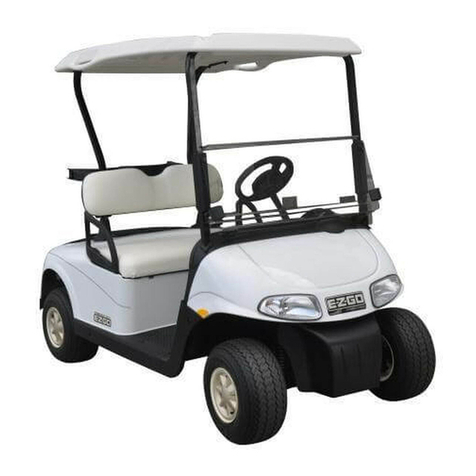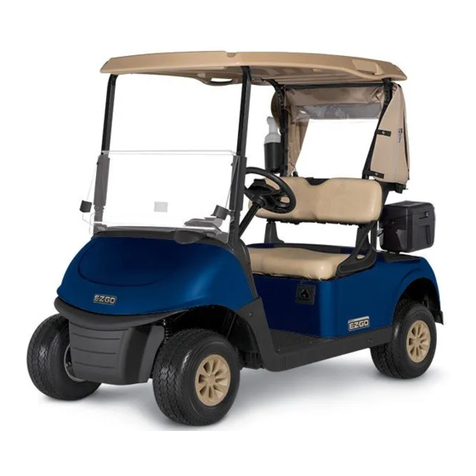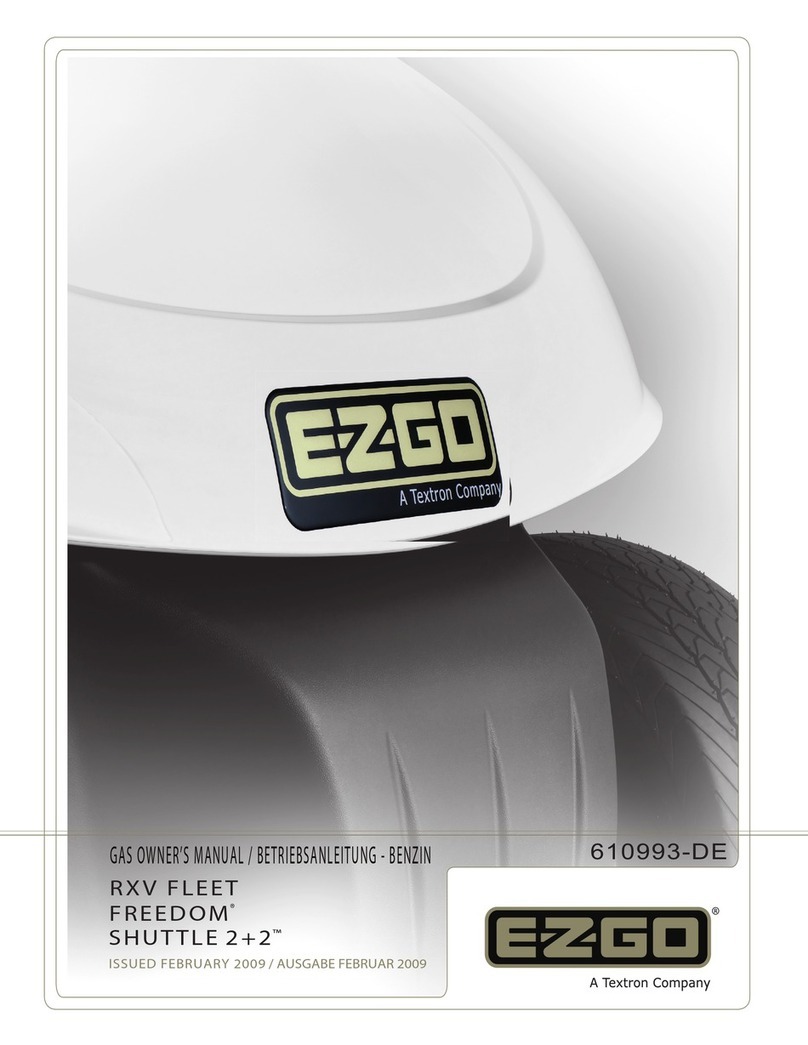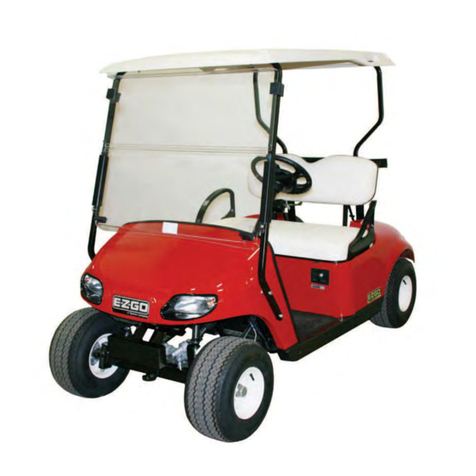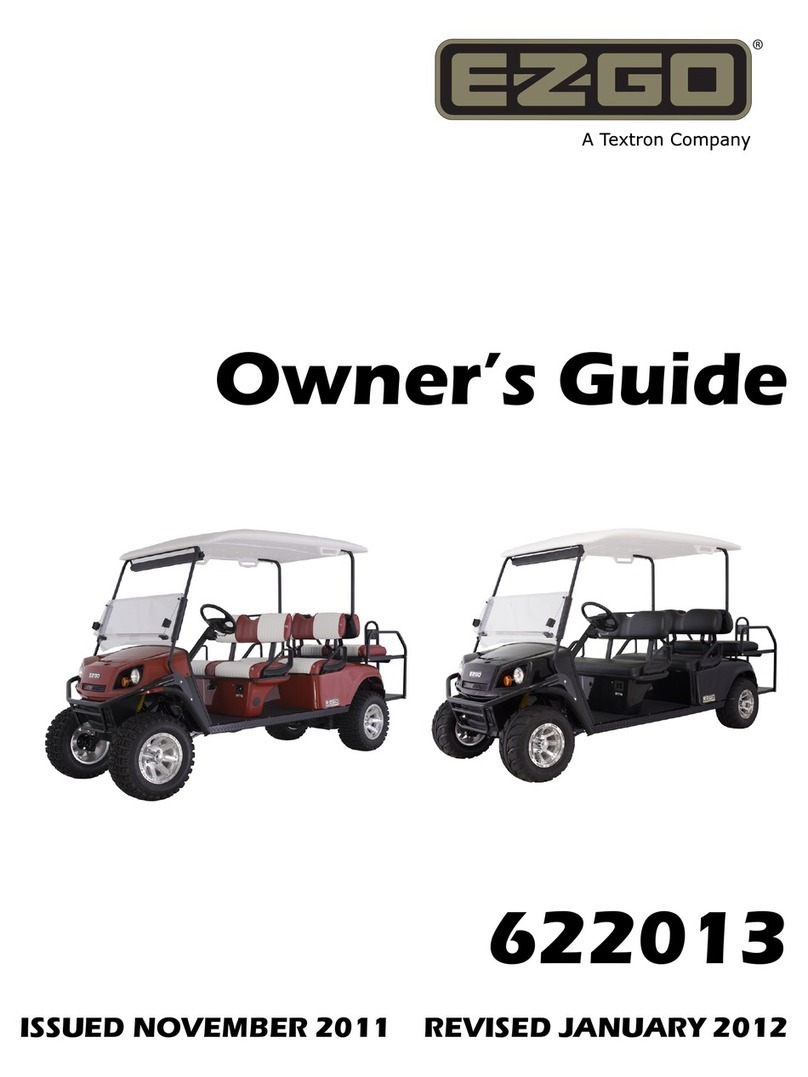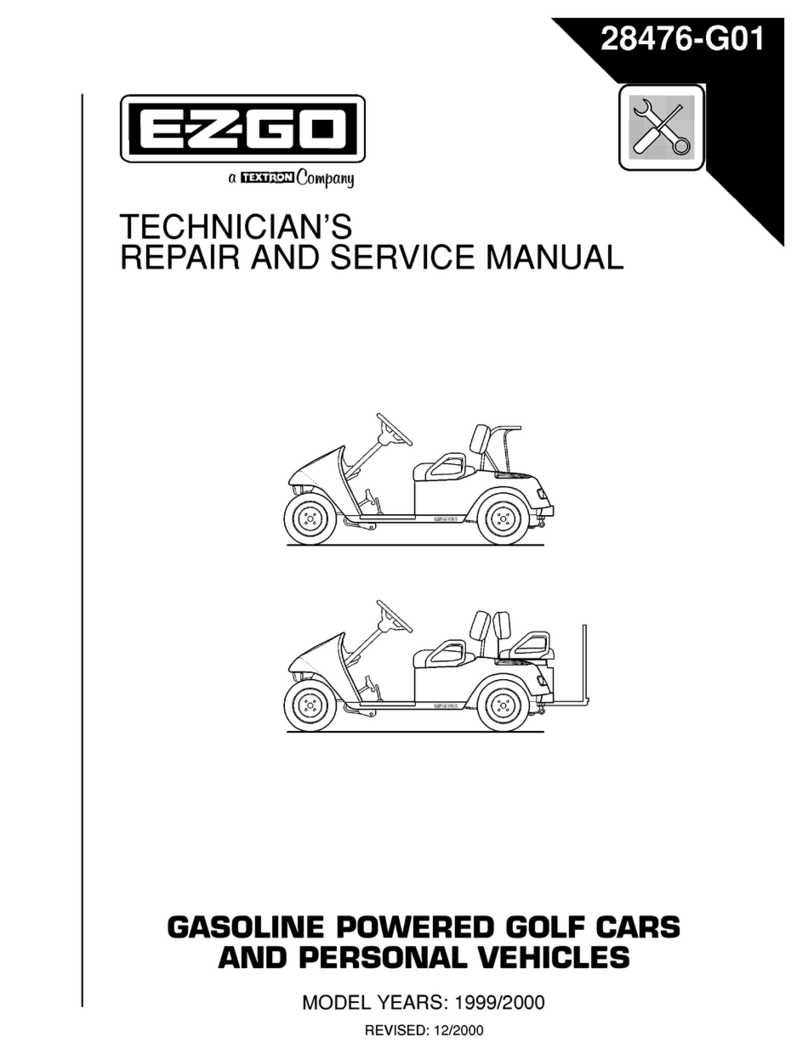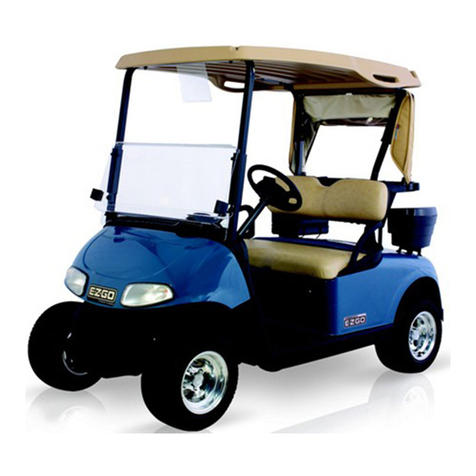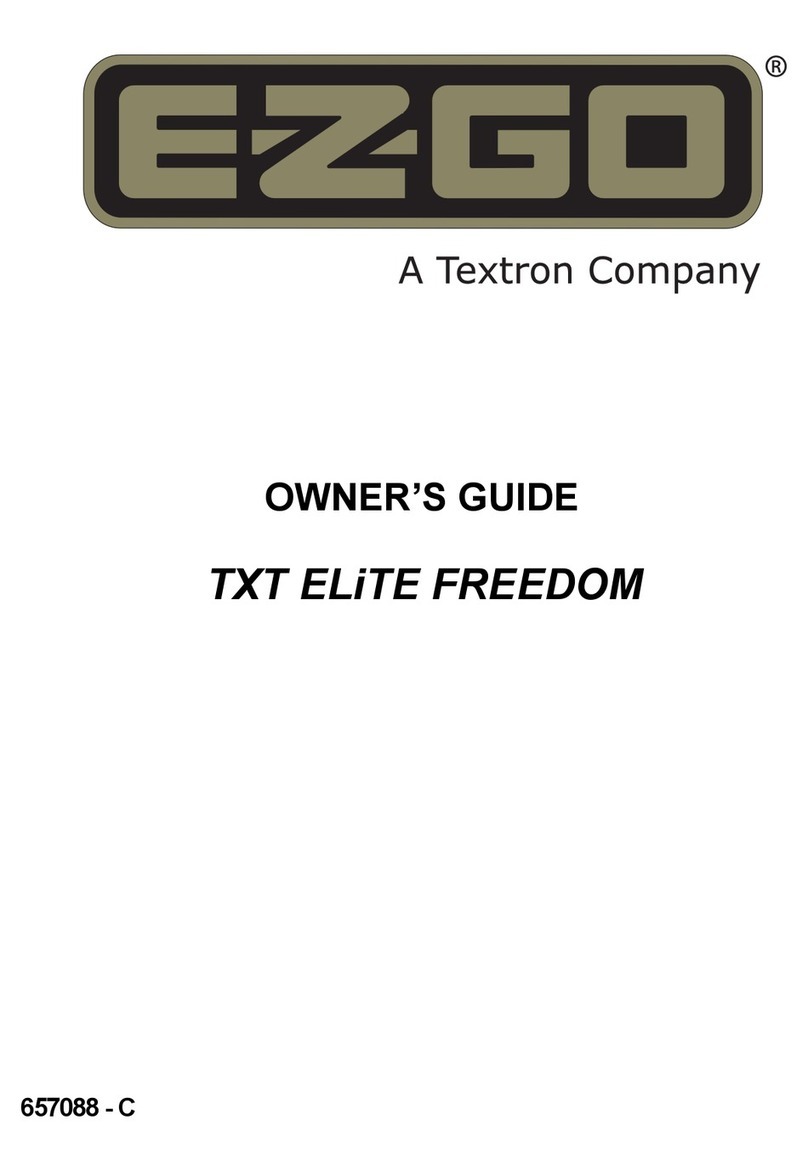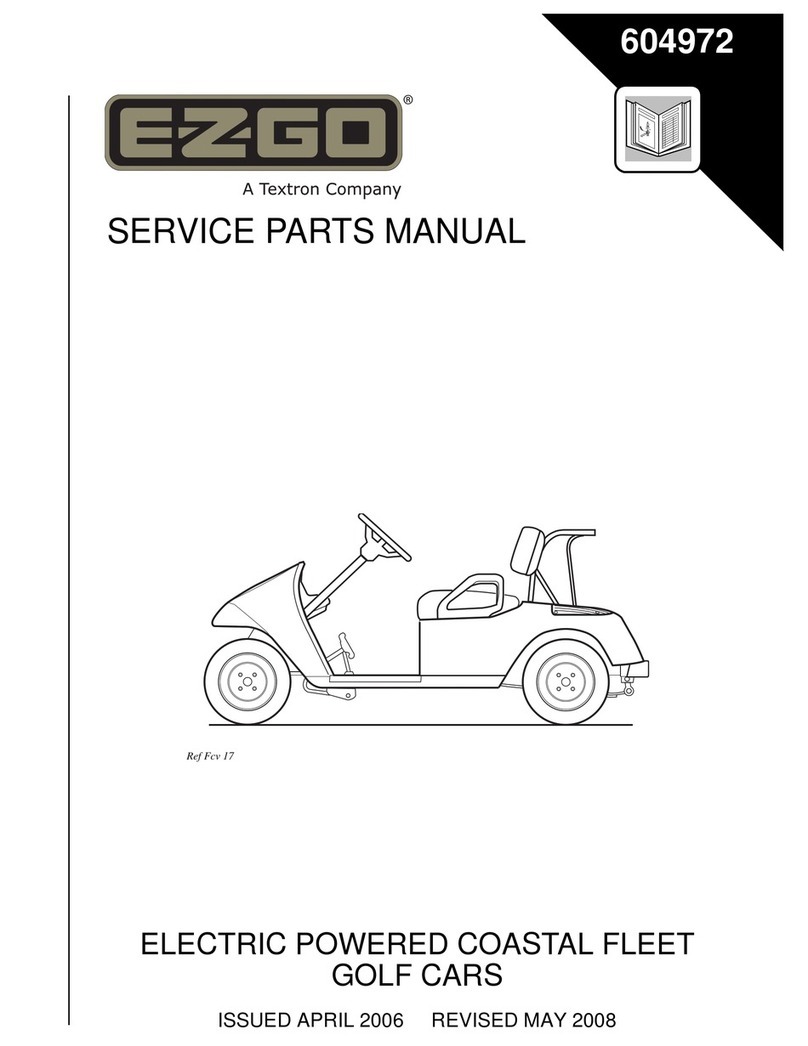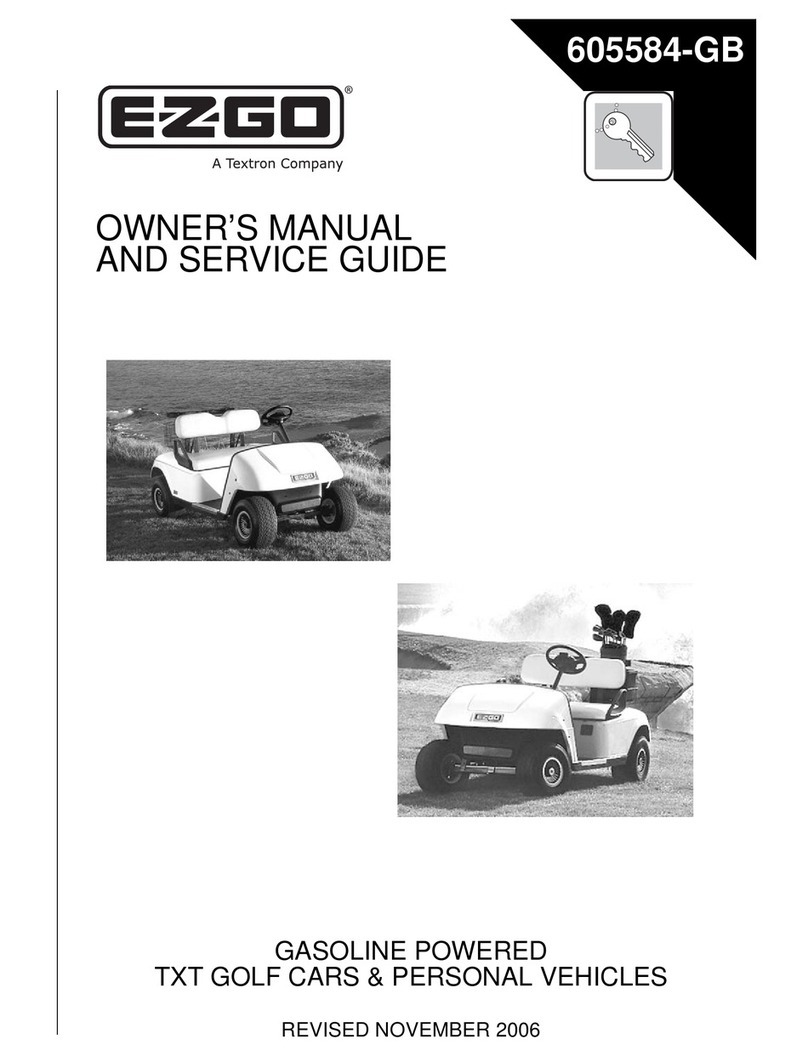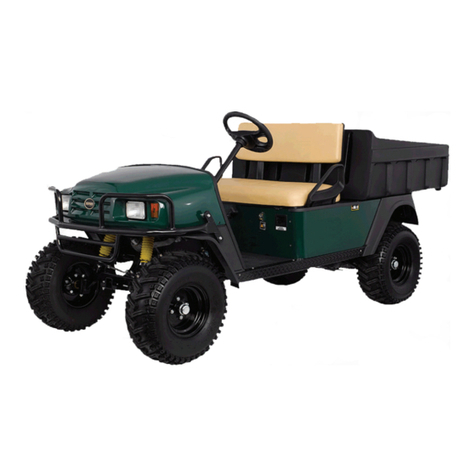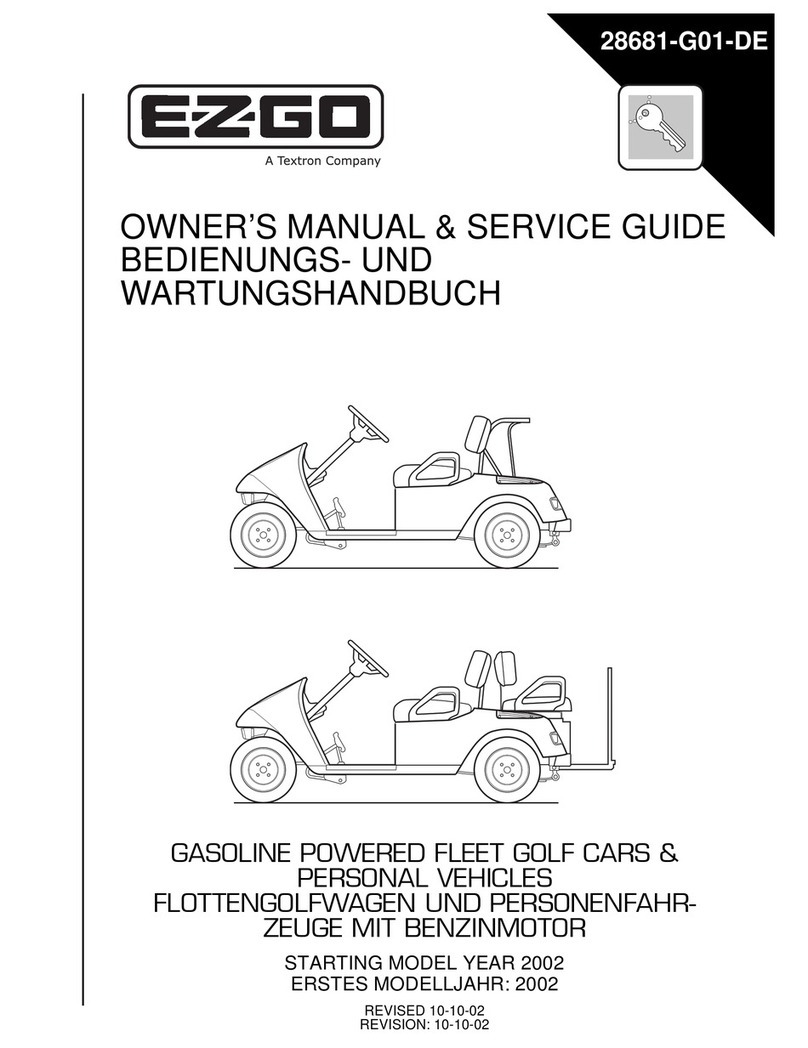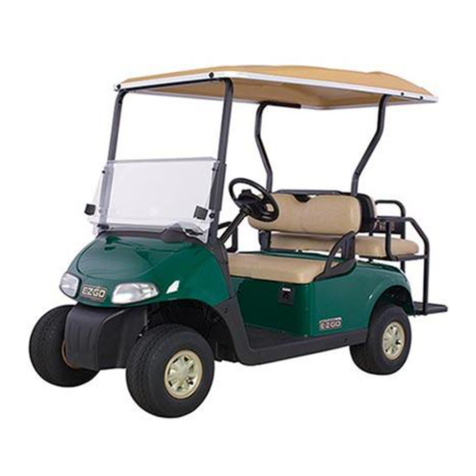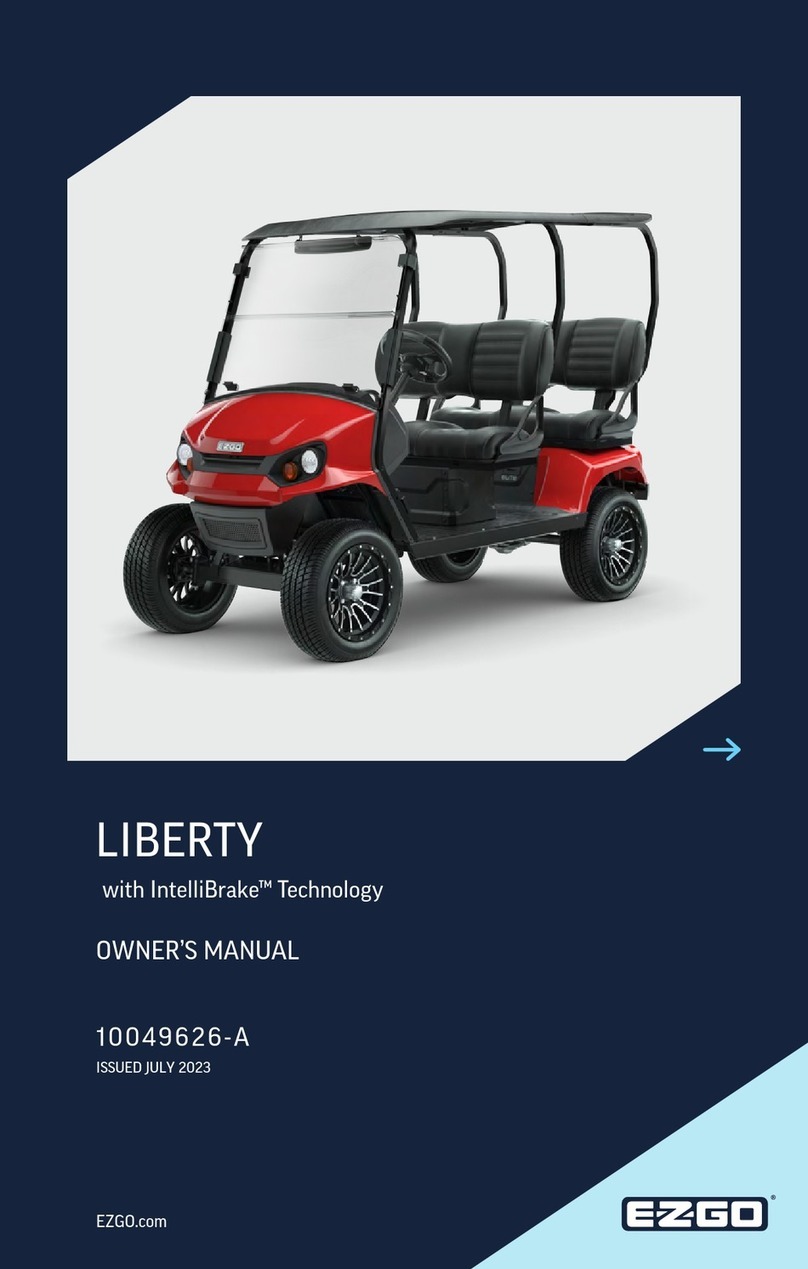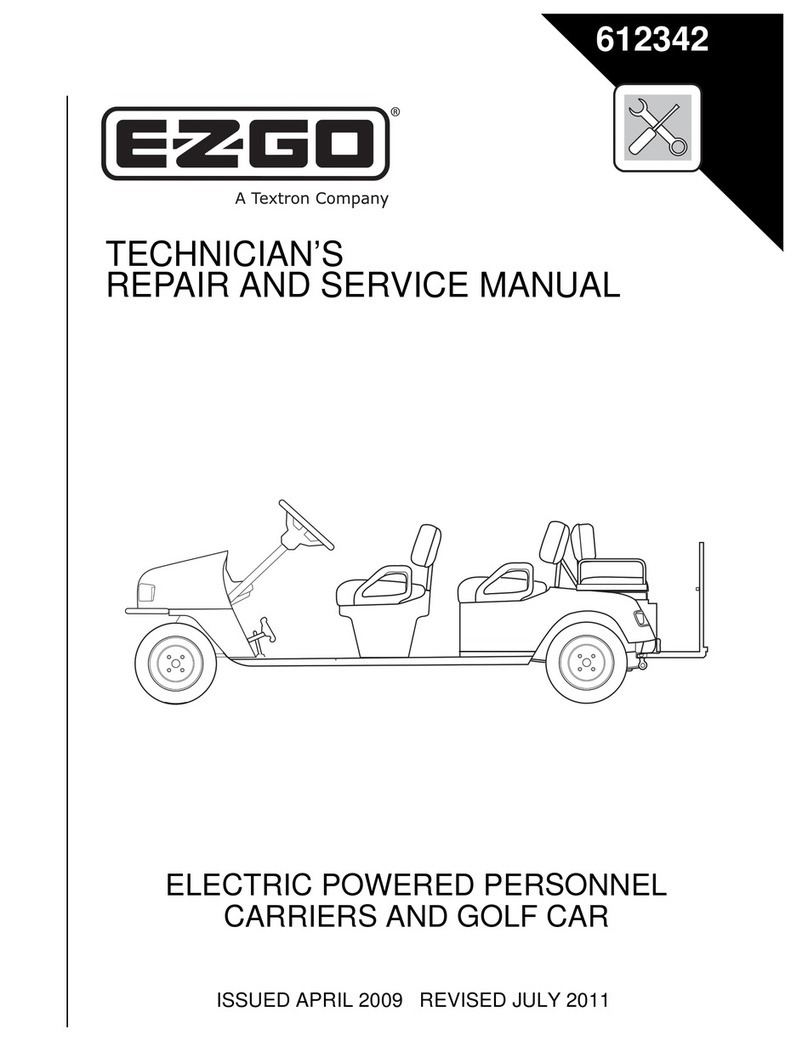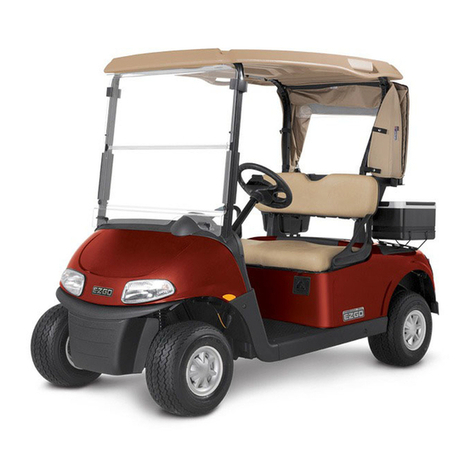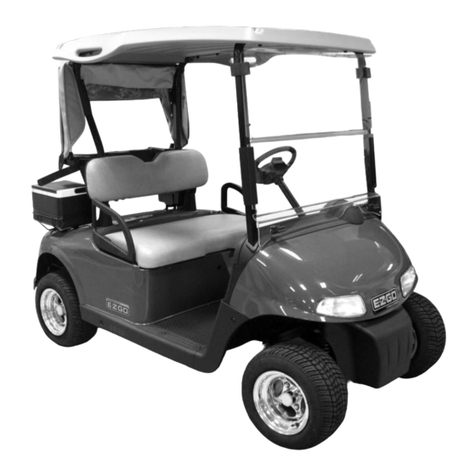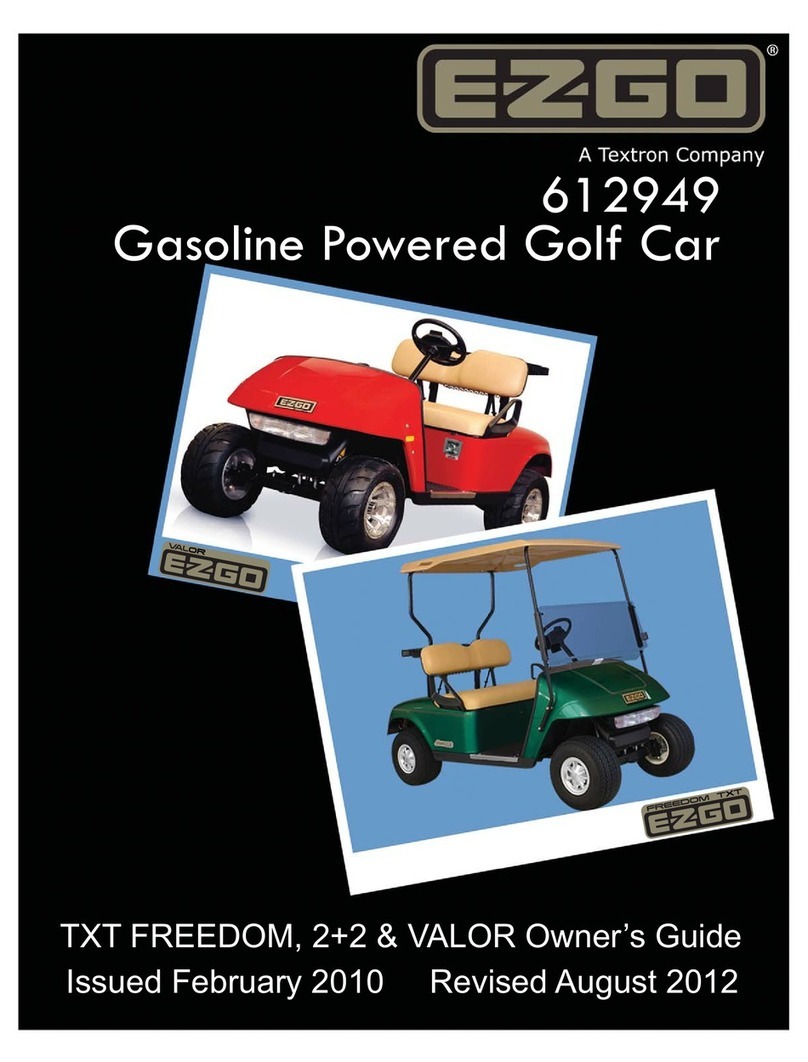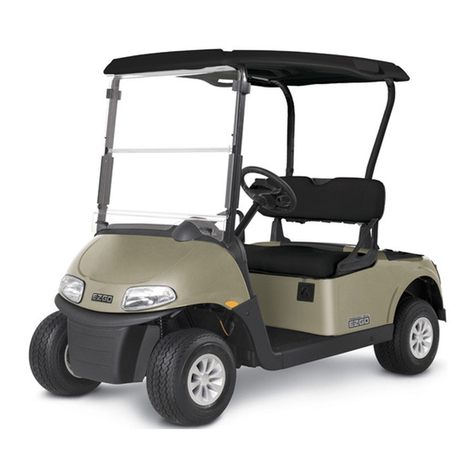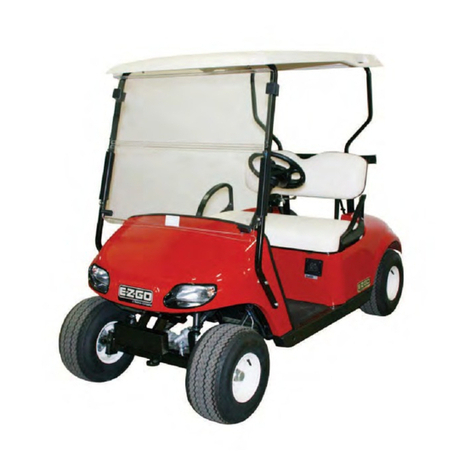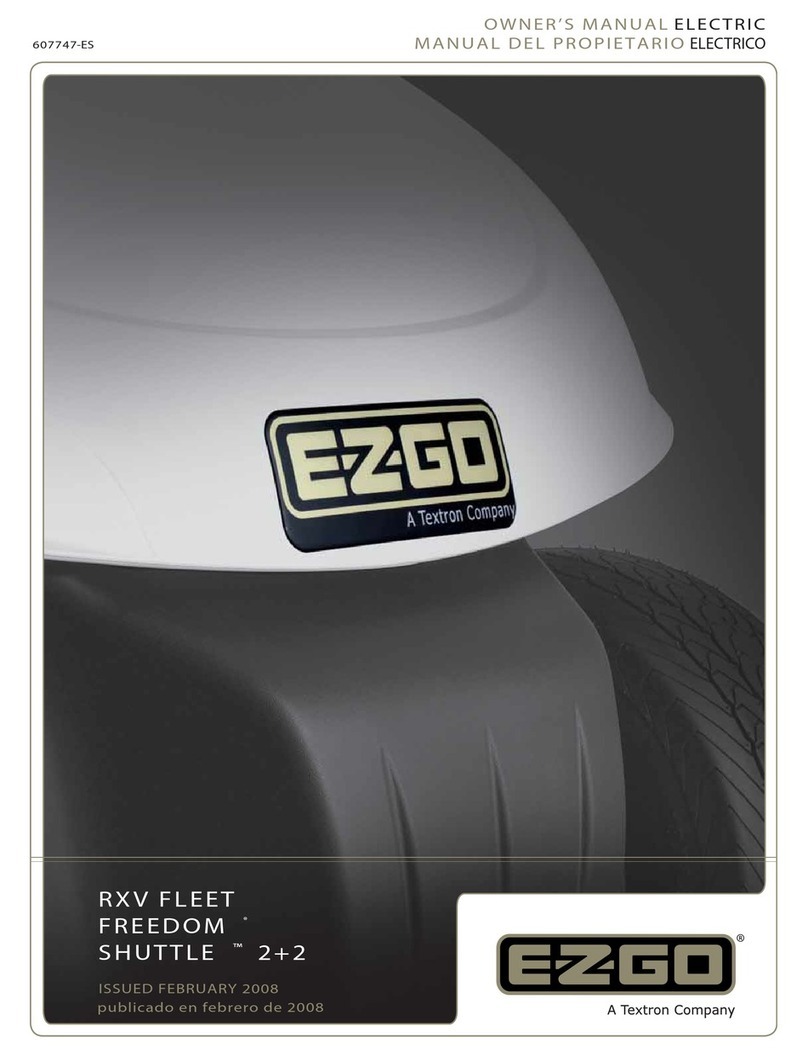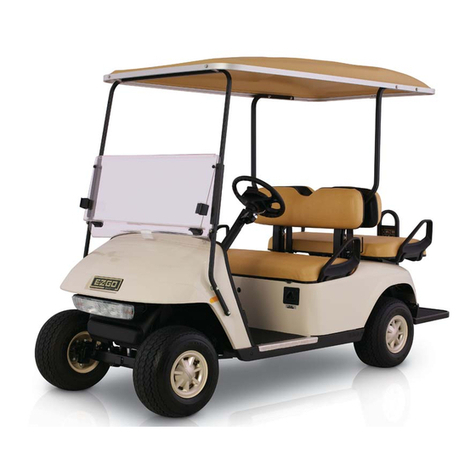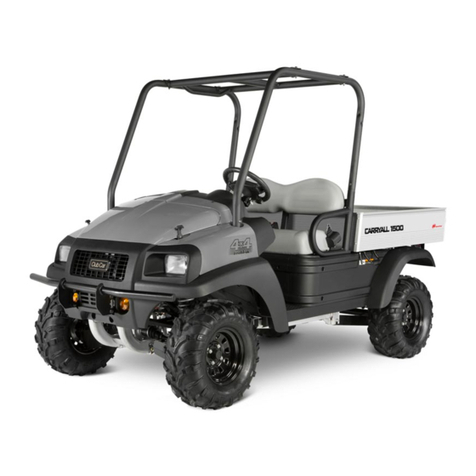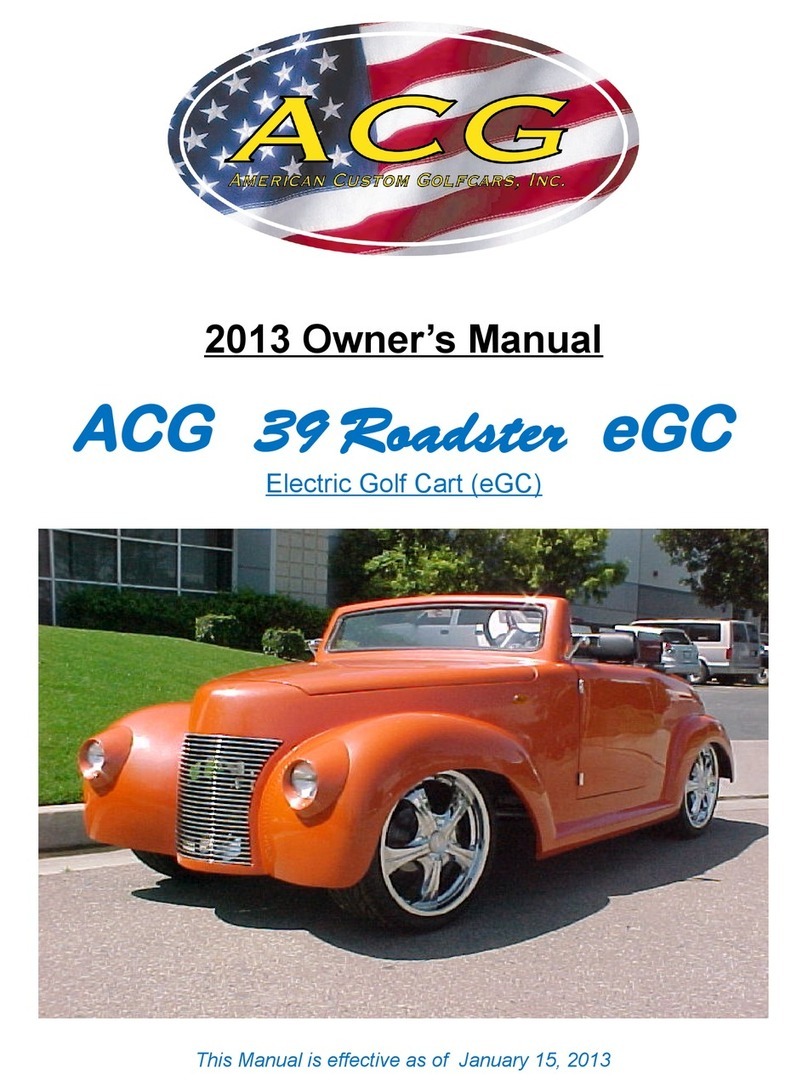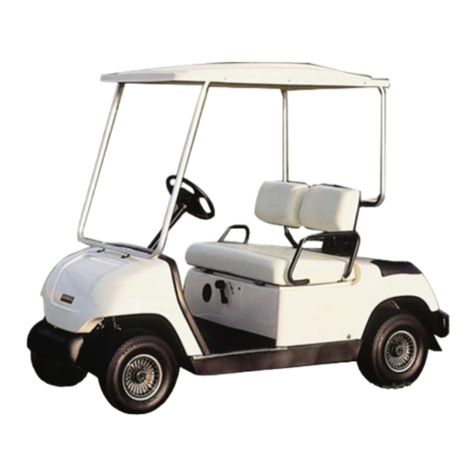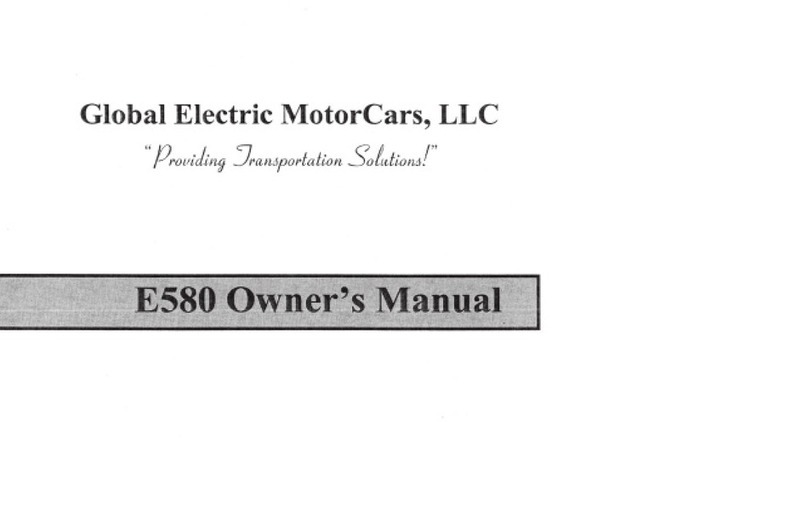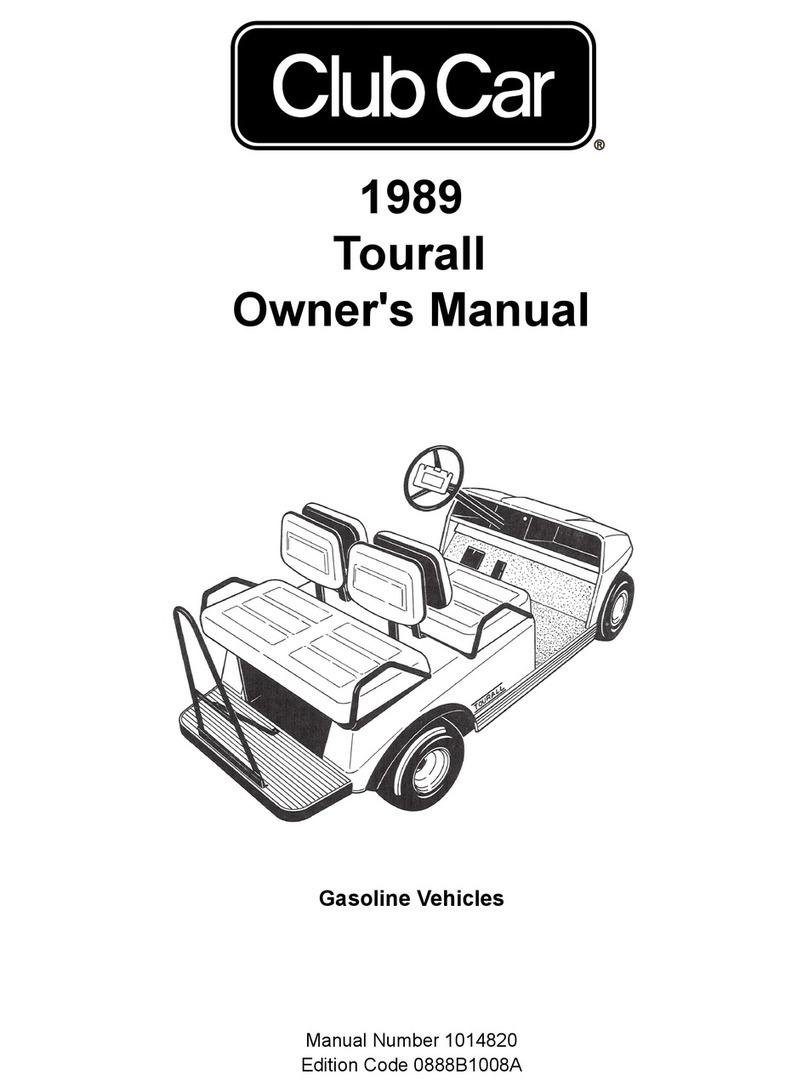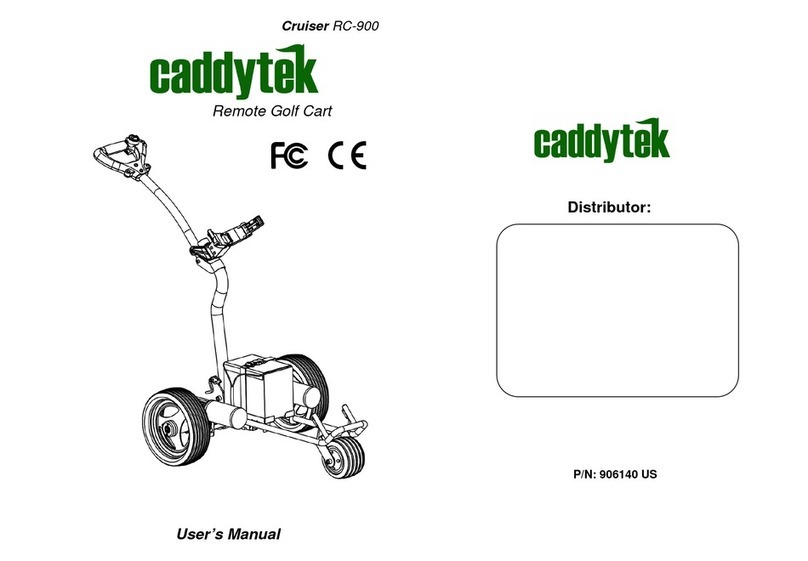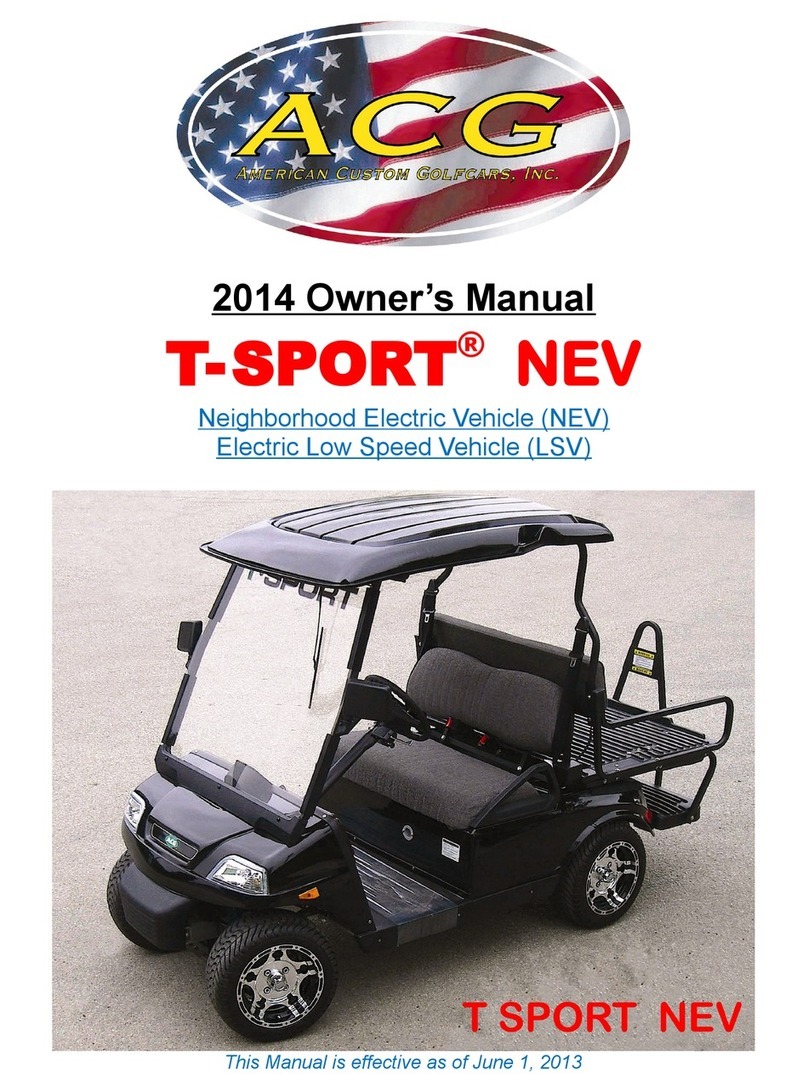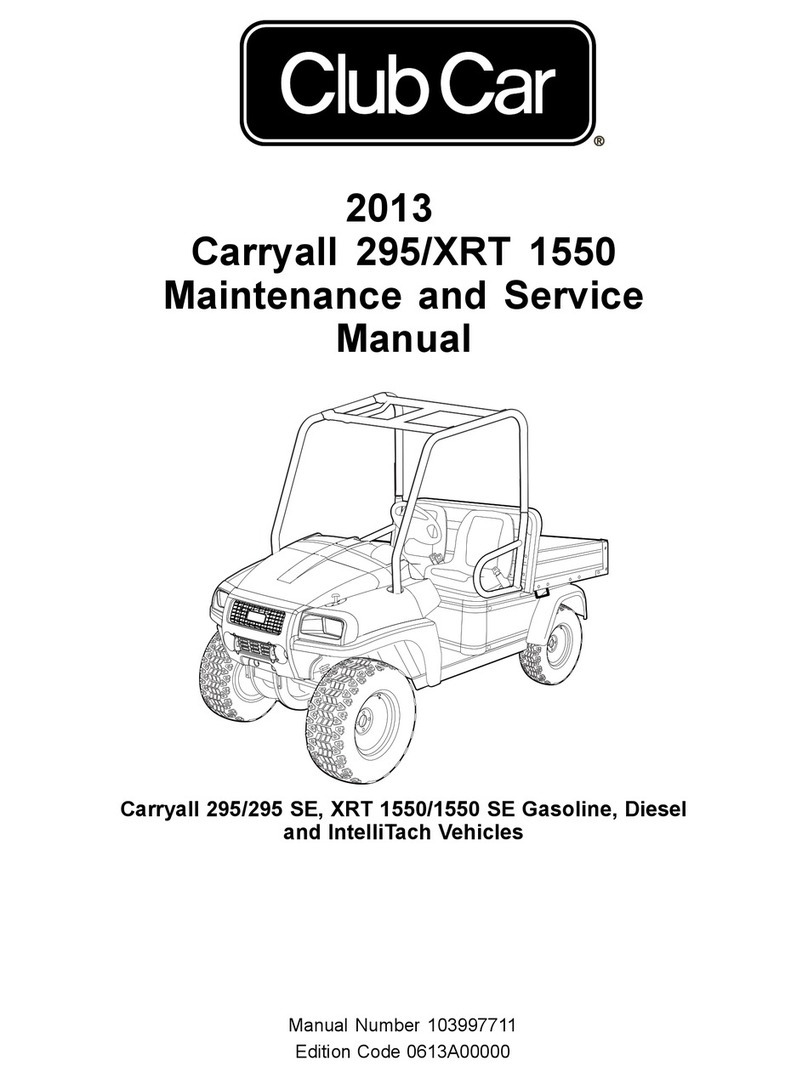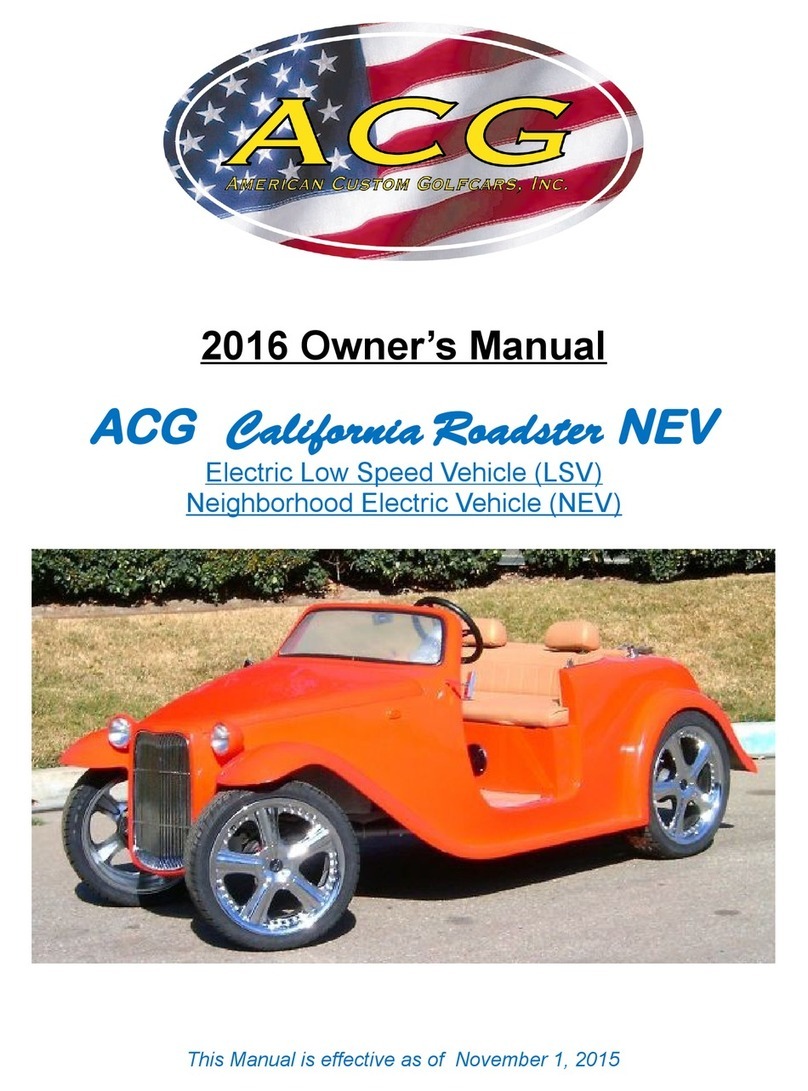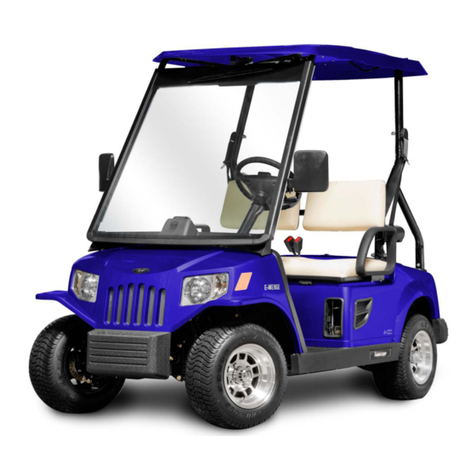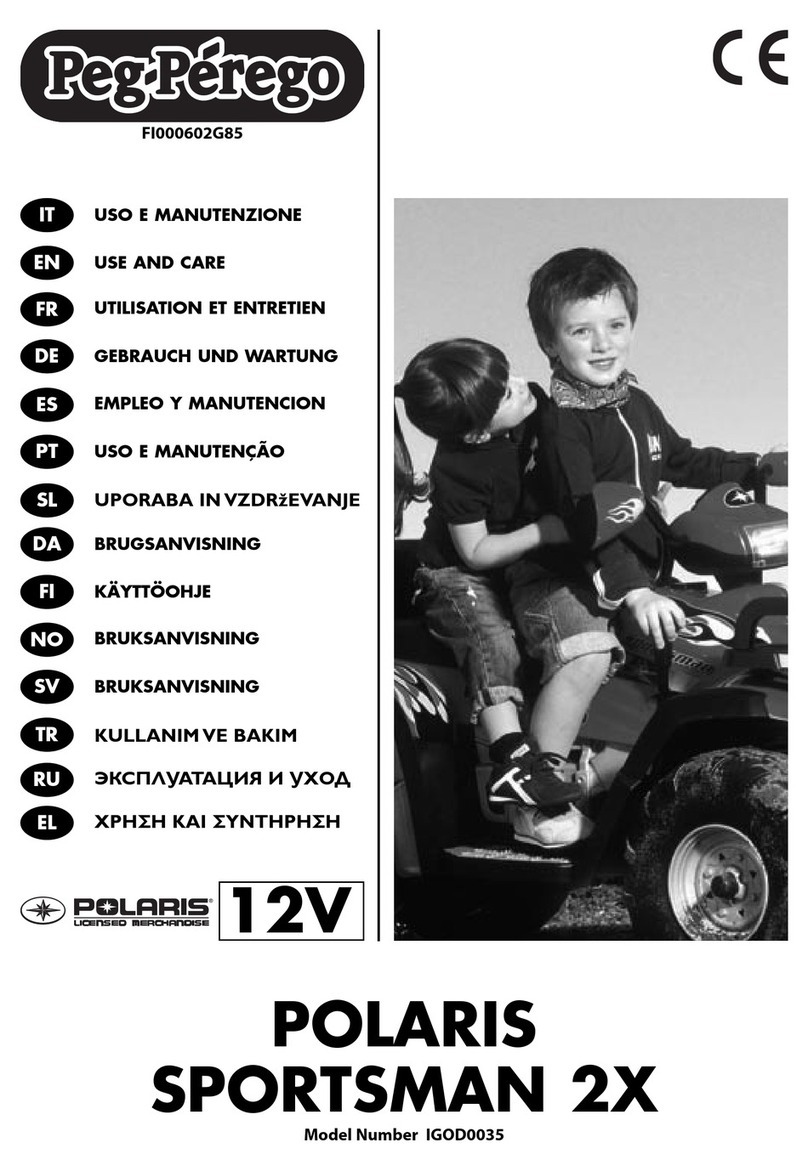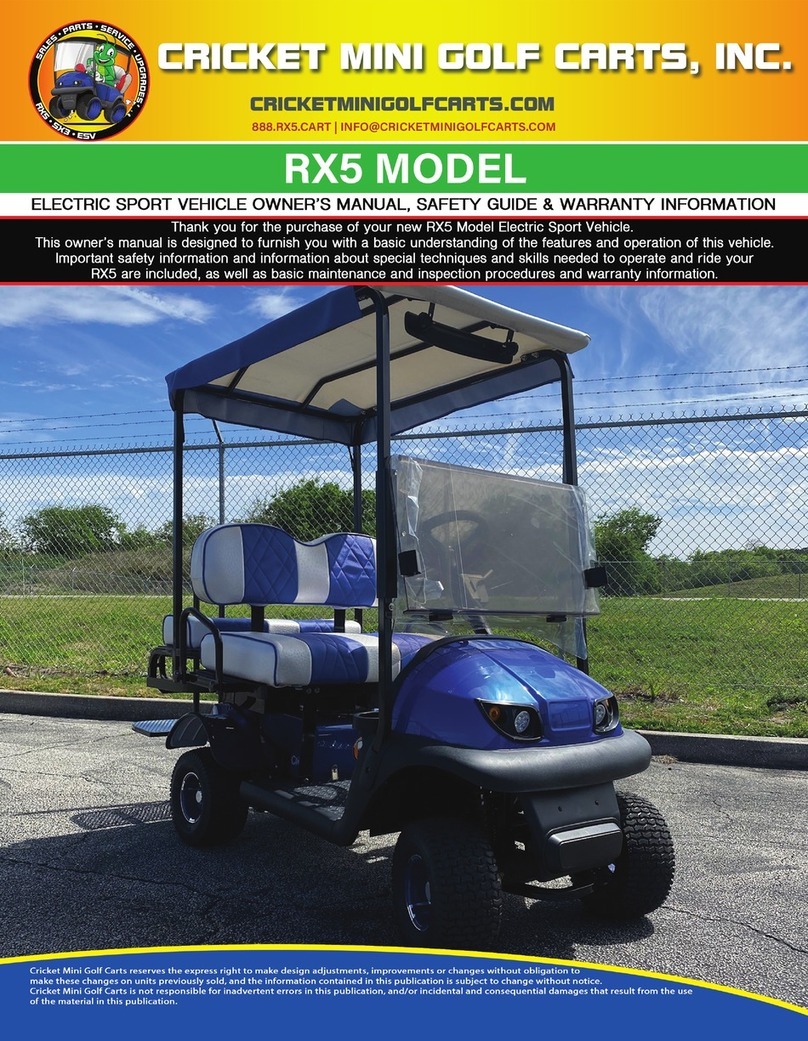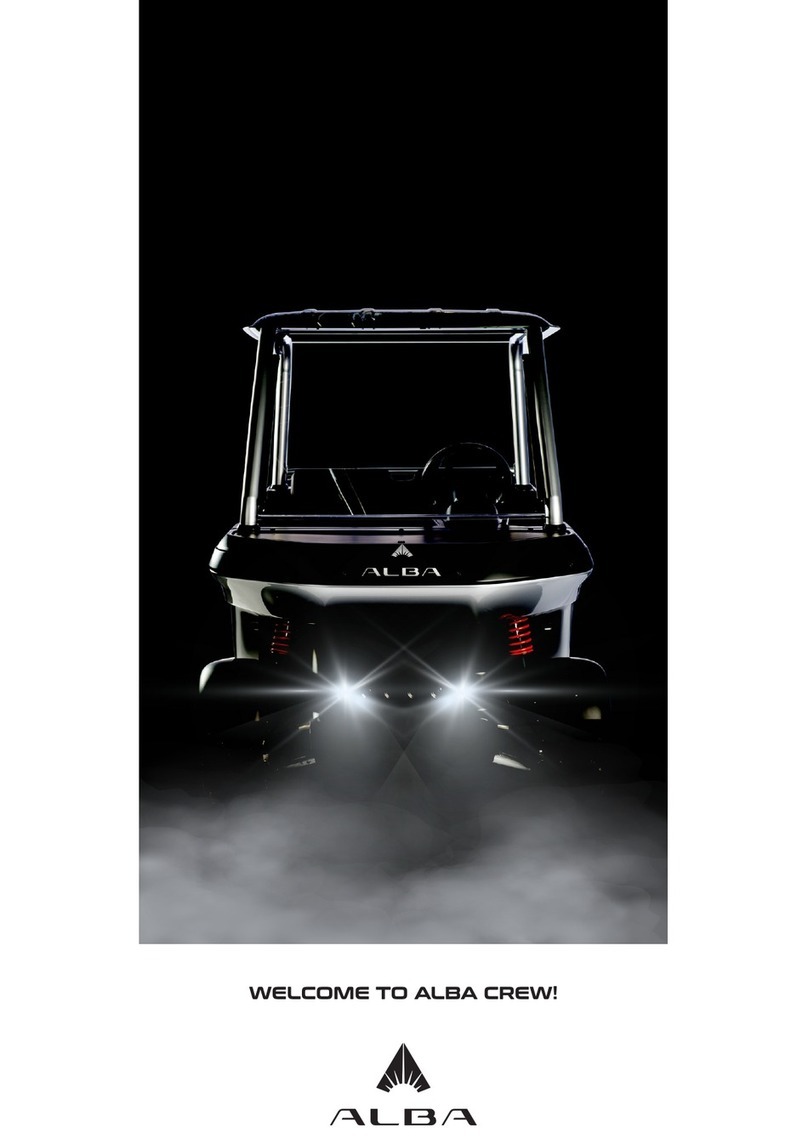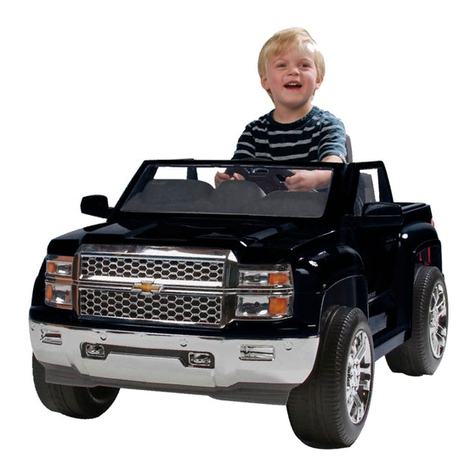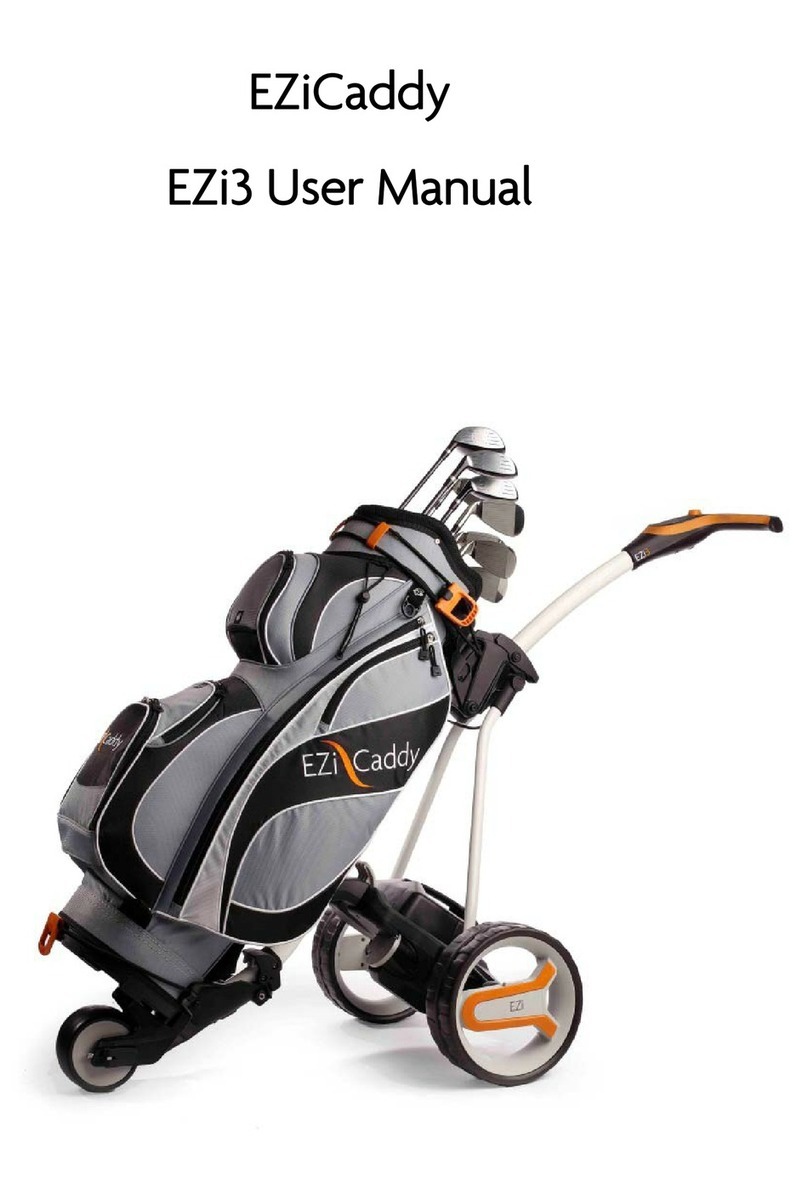
SAFETY
Read all of this manual to become thoroughly familiar with this vehicle. Pay particular attention to all Notices, Cautions, Warnings, and Dangers.
2
This manual has been designed to assist in maintaining the vehicle in accordance with procedures developed by the
manufacturer. Following these procedures and troubleshooting tips will ensure the best possible service from the prod-
uct. To reduce the chance of personal injury or property damage, the following must be carefully observed:
Certain replacement parts can be used independently and/or in combination with other
accessories to modify an TSV manufactured vehicle to permit the vehicle to operate at or
in excess of 20 mph. When an TSV manufactured vehicle is modified in any way by the
Distributor, Dealer or customer to operate at or in excess of 20mph, UNDER FEDERAL
LAW the modified product will be a Low Speed Vehicle (LSV) subject to the strictures and
requirements of Federal Motor Vehicle Safety Standard 571.500. In these instances, pur-
suant to Federal law the Distributor or Dealer MUST equip the product with headlights,
rear lights, turn signals, seat belts, top, horn and all other modifications for LSV’s man-
dated in FMVSS 571.500, and affix a Vehicle Identification Number to the product in
accordance with the requirements of FMVSS 571.565. Pursuant to FMVSS 571.500, and in
accordance with the State laws applicable in the places of sale and use of the product,
the Distributor, Dealer or customer modifying the vehicle also will be the Final Vehicle
Manufacturer for the LSV, and required to title or register the vehicle as mandated by
State law.
TSV will NOT approve Distributor, Dealer or customer modifications converting TSV products into LSV’s.
The Company recommends that all TSV products sold as personal transportation vehicles BE OPERATED ONLY BY
PERSONS WITH VALID DRIVERS LICENSES, AND IN ACCORDANCE WITH APPLICABLE STATE REQUIRE-
MENTS. This restriction is important to the SAFE USE AND OPERATION of the product.
All customers should adhere to this SAFETY RESTRICTION, in connection with the use of all TSV products, new and
used, the Distributor or Dealer has reason to believe may be operated in personal transportation applications.
Information on FMVSS 571.500 can be obtained at Title 49 of the Code of Federal Regulations, section 571.500, or
through the Internet at the web site for the U.S. Department of Transportation - at Dockets and Regulation, then to Title
49 of the Code of Federal Regulations (Transportation).
Since this vehicle can be used for a variety of tasks, it is impossible to anticipate and warn against every possible com-
bination of circumstances that may occur. Always operate responsibly.
All users and maintenance personnel must read this entire manual, paying particular attention to all CAUTIONS,
WARNINGS and DANGERS.
If you have any questions regarding this vehicle, contact your E-Z-GO dealer or write to the address on the back cover
of this publication, Attention: Customer Care Department.
TSV reserves the right to make design changes without obligation to make these changes on units previously sold. The
information contained in this manual is subject to change without notice.
TSV IS NOT LIABLE FOR ERRORS IN THIS MANUAL. TSV IS NOT LIABLE FOR INCIDENTAL OR CONSEQUEN-
TIAL DAMAGES THAT RESULT FROM THE USE OF THE MATERIAL IN THIS MANUAL.
This vehicle conforms to the current applicable standard(s) for safety and performance requirements.
This vehicle does not conform to Federal Motor Vehicle Safety Standards (FMVSS) of the United States of America
(USA) and is not intended for operation on public streets. Some communities may permit operation of this type of vehi-
cle on neighborhood streets on a limited basis and in accordance with local ordinances.
Always make sure that all electrical accessories are grounded directly to the battery (-) post. Never use the chassis or
body as a ground connection.
Refer to GENERAL SPECIFICATIONS for vehicle seating capacity.
Never modify the vehicle in any way that will alter the weight distribution of the vehicle,
decrease it’s stability, or increase the speed or extend the stopping distance beyond the
factory specification. Such modifications can result in serious personal injury or death.
Operation of the vehicle is limited to persons above the height of 59 inches (150 cm).
Never modify the vehicle in any way that will alter the weight distribution of the vehicle, decrease it’s stability, or
increase the speed or extent the stopping distance beyond the factory specification. TSV prohibits and disclaims
responsibility for all such modifications which would adversely affect the safety of the vehicle.
